Escape Velocity

Escape velocity
A snippet from a full page graphic - vintage scientific illustration c.1960
More Posts from Astrotidbits-blog and Others
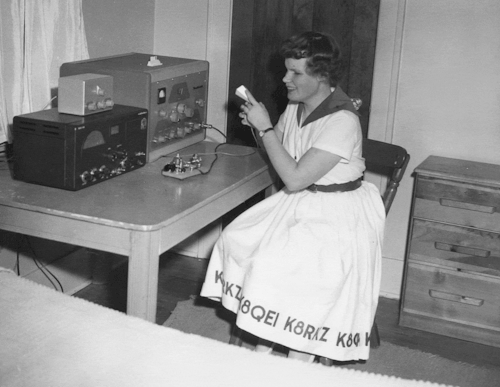
Found a couple old photos of my mom practicing her ham radio skillz back in the day. Ham radio was actually the catalyst through which she met my father. Take that, Internet Dating.
My grandma made that dress she’s wearing with their call letters appliquéd along the hem.
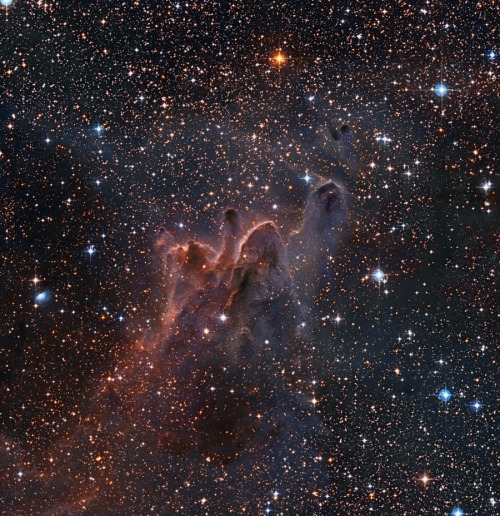
Cometary Globules
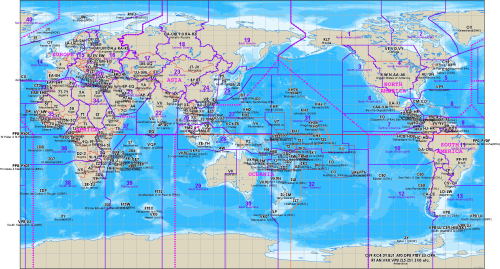
World ham radio prefix map










Cassini prepares for final orbital “Grand Finale” at Saturn.
Erik Wernquist, the same filmmaker who created 2014’s “Wanderers” and a stunning New Horizons promotional film in 2015, has created a new video highlighting NASA’s Cassini mission’s final days at Saturn. The Cassini spacecraft will begin its final series of orbits to cap a 13-year groundbreaking science mission known as the Grand Finale. For the first time ever in Cassini’s time at Saturn, the spacecraft will fly in between the planet’s rings and atmosphere. No spacecraft has ever before flown in this region of any of the solar system’s ringed planets. After 23 orbits, Cassini will dive into Saturn’s upper atmosphere September 15 where it will be destroyed. In 2008, mission managers explored a range of End of Mission scenarios that would protect Saturn’s moon’s from Earthly contaminants before ultimately deciding on atmospheric reentry. Cassini began her End of Mission manoeuvres on November 26, 2016, when it began the first of 20 ring-grazing orbits. A close flyby of Titan April 22 will alter the spacecraft’s trajectory to begin the first of 23 orbits in the Grand Finale, which will begin April 26.

Cassini launched from Earth on October 15, 1997, and entered Saturn orbit June 30, 2004. Six months later, on January 14, 2005, the European-built Huygens probe attached to the spacecraft landed on Titan, becoming the first probe to land in the outer solar system.
Originally scheduled for a four-year mission ending in 2008, Cassini received two mission extensions in 2008 and 2010, with the latter ending in 2017. With the spacecraft’s fuel reserves low, the Cassini team decided to end the mission. P/C: JPL/Erik Wernquist

http://player.vimeo.com/video/62255585
Comet Panstarrs captured in gorgeous time-lapse above the skies of Boulder, CO by Patrick Cullis. Lovely stuff.
Comets are mysterious frozen chunks of stellar and planetary debris, these dirty snowballs that wander in darkness until their tails are blown bright and wide by solar winds. Some follow paths so random and eccentric that they may pass a star only once, or perhaps not at all, instead floating through interstellar space, never to be known. But for those fleeting moments, like Panstarrs’ current passage, they are like icy candles lit for our enjoyment by the breath of the sun.
A song of ice and fire, indeed.
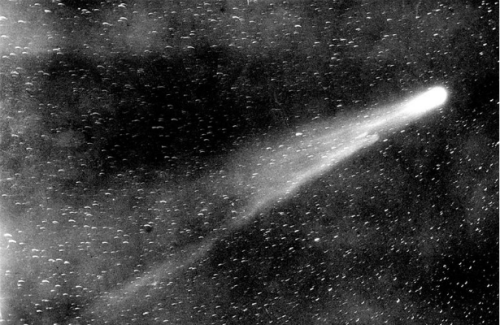
How I Discovered Halley’s Comet, by Edmond Halley
On Monday, June 10, in the Evening, the Sky being very serene and calm, I was desirous to take a view of the disk of Mars (then very near the Earth, and appearing very glorious) to see if I could distinguish in my 24 Foot Telescope, the Spots said to be seen on him. Directing my Tube for the purpose, I accidentally fell upon a small whitish Appearance near the Planet, resembling in all respects such a Nebula … The Reverend Mr. Miles Williams, Mr. Alban Thomas, and myself contemplated this Appearance for above an Hour … and we could not be deceiv’d as to its Reality; but the slowness of its Motion made us at that time conclude that it had none, and that it was rather a Nebula than a Comet.
Read more. [Image: Wikimedia Commons]
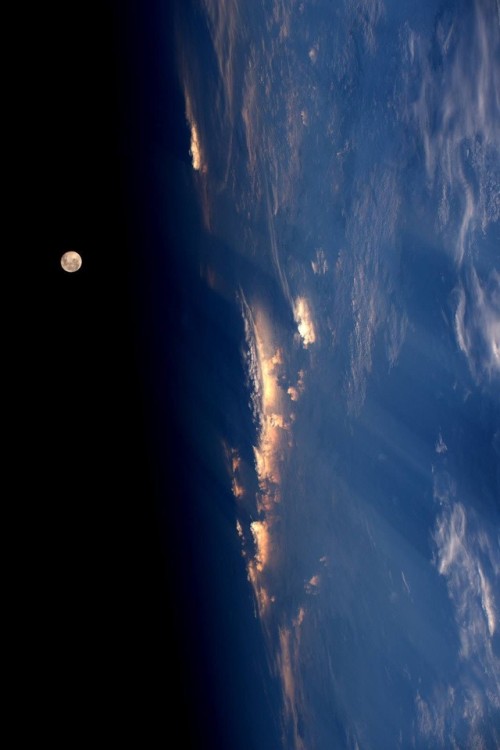
Space Station View of the Full Moon
Credit: NASA & ISS

Ted Chin
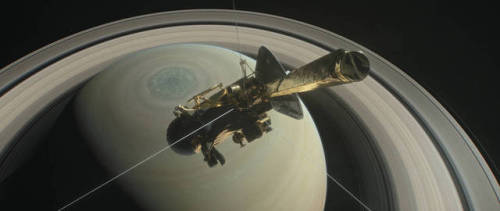
This artist’s rendering shows NASA’s Cassini spacecraft above Saturn’s northern hemisphere, heading toward its first dive between Saturn and its rings on April 26, 2017.
-
 cosmotheros reblogged this · 1 year ago
cosmotheros reblogged this · 1 year ago -
 phthalology liked this · 1 year ago
phthalology liked this · 1 year ago -
 kitsuragis reblogged this · 1 year ago
kitsuragis reblogged this · 1 year ago -
 filling-the-v0id liked this · 1 year ago
filling-the-v0id liked this · 1 year ago -
 disco-cat reblogged this · 1 year ago
disco-cat reblogged this · 1 year ago -
 kainamite15 liked this · 1 year ago
kainamite15 liked this · 1 year ago -
 unorthodoxchronicles reblogged this · 1 year ago
unorthodoxchronicles reblogged this · 1 year ago -
 unorthodoxchronicles liked this · 1 year ago
unorthodoxchronicles liked this · 1 year ago -
 anakachow liked this · 1 year ago
anakachow liked this · 1 year ago -
 i-am-thevoid liked this · 1 year ago
i-am-thevoid liked this · 1 year ago -
 spacey-daydreams reblogged this · 1 year ago
spacey-daydreams reblogged this · 1 year ago -
 spacey-daydreams liked this · 1 year ago
spacey-daydreams liked this · 1 year ago -
 grimmjow reblogged this · 1 year ago
grimmjow reblogged this · 1 year ago -
 gaylienz reblogged this · 1 year ago
gaylienz reblogged this · 1 year ago -
 gaylienz liked this · 1 year ago
gaylienz liked this · 1 year ago -
 the-nothing liked this · 1 year ago
the-nothing liked this · 1 year ago -
 fourthsinofamestris reblogged this · 1 year ago
fourthsinofamestris reblogged this · 1 year ago -
 fourthsinofamestris liked this · 1 year ago
fourthsinofamestris liked this · 1 year ago -
 klushund reblogged this · 1 year ago
klushund reblogged this · 1 year ago -
 trigunstargaze liked this · 1 year ago
trigunstargaze liked this · 1 year ago -
 solarpoweredcreature reblogged this · 1 year ago
solarpoweredcreature reblogged this · 1 year ago -
 chicago-stay-a-machine reblogged this · 1 year ago
chicago-stay-a-machine reblogged this · 1 year ago -
 thatwhatthing reblogged this · 1 year ago
thatwhatthing reblogged this · 1 year ago -
 pixel-sharks reblogged this · 1 year ago
pixel-sharks reblogged this · 1 year ago -
 wrstudio-br liked this · 1 year ago
wrstudio-br liked this · 1 year ago -
 husmusik reblogged this · 1 year ago
husmusik reblogged this · 1 year ago -
 hazeydaisey reblogged this · 1 year ago
hazeydaisey reblogged this · 1 year ago -
 sirdukeofearl2 reblogged this · 1 year ago
sirdukeofearl2 reblogged this · 1 year ago -
 catnumbers liked this · 1 year ago
catnumbers liked this · 1 year ago -
 palateswap reblogged this · 1 year ago
palateswap reblogged this · 1 year ago -
 palateswap liked this · 1 year ago
palateswap liked this · 1 year ago -
 solarpoweredcreature liked this · 1 year ago
solarpoweredcreature liked this · 1 year ago -
 sudokufag liked this · 1 year ago
sudokufag liked this · 1 year ago -
 grenade-maid reblogged this · 1 year ago
grenade-maid reblogged this · 1 year ago -
 spacecorpse444 reblogged this · 1 year ago
spacecorpse444 reblogged this · 1 year ago -
 stu-piddiddiot liked this · 1 year ago
stu-piddiddiot liked this · 1 year ago -
 descartesmindwax liked this · 1 year ago
descartesmindwax liked this · 1 year ago -
 sweetangersworld liked this · 1 year ago
sweetangersworld liked this · 1 year ago -
 rememberalecs reblogged this · 1 year ago
rememberalecs reblogged this · 1 year ago -
 violentraine reblogged this · 1 year ago
violentraine reblogged this · 1 year ago -
 mydruthersworld liked this · 1 year ago
mydruthersworld liked this · 1 year ago -
 dumbandbeautiful reblogged this · 1 year ago
dumbandbeautiful reblogged this · 1 year ago -
 dumbandbeautiful liked this · 1 year ago
dumbandbeautiful liked this · 1 year ago -
 kevingavins-blog liked this · 1 year ago
kevingavins-blog liked this · 1 year ago -
 crow-x3 liked this · 1 year ago
crow-x3 liked this · 1 year ago -
 aupermittymeowmeow liked this · 1 year ago
aupermittymeowmeow liked this · 1 year ago -
 piconoodle reblogged this · 1 year ago
piconoodle reblogged this · 1 year ago -
 hanktalkin reblogged this · 1 year ago
hanktalkin reblogged this · 1 year ago -
 lilgraspin liked this · 1 year ago
lilgraspin liked this · 1 year ago